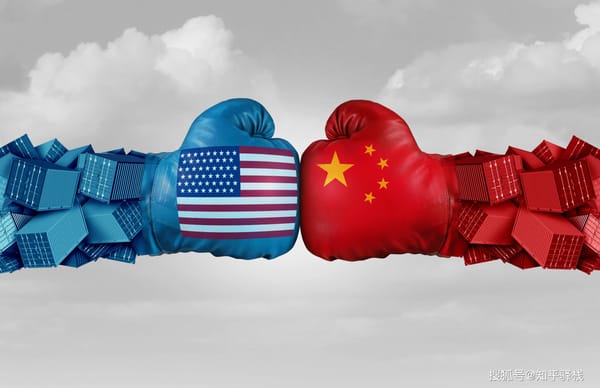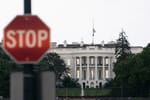By Cai Tongjuan
The trade war between China and the United States has escalated once again. Following Washington’s announcement of steep tariffs on Chinese goods, Beijing swiftly responded on April 4th, announcing a blanket 34% tariff on all imports from the United States. Simultaneously, China introduced export controls on rare earths and released an unreliable entity list, forming a dual-pronged strategy combining tariffs and technology restrictions. This assertive move marks a new stage in the economic and trade rivalry between the two nations, balancing immediate tactical responses with long-term strategic adjustments.
Counter-Tariffs to Combat "Unilateral Bullying"
Firstly, China’s counter-tariffs aim to uphold international trade norms and protect national dignity. Washington’s unilateral tariff hikes violate World Trade Organization (WTO) principles and epitomize what many view as “economic bullying.” By invoking domestic laws such as the Foreign Trade Law and the Customs Law of the People’s Republic of China, China is reinforcing its commitment to defending the multilateral trading system. Unlike the tiered tariff rates (5%-25%) adopted during the 2018 trade war, the blanket 34% tariff signals a stricter stance, sending a clear message: China is prepared to fight back decisively while seeking a peaceful resolution.
Secondly, these measures protect domestic industries and buffer external shocks. The United States' cumulative tariff increase of 54%-66% on Chinese goods may hit industries such as computers, electronics, furniture, and textiles, which depend on the United States by over 10%. China's retaliatory tariffs provide breathing room for exporters while buying time for domestic alternatives.
This latest round of tariffs also strengthens China’s negotiating position. In 2018, China successfully brought the United States back to the negotiation table by restricting soybean imports and other agricultural products. This time, the indiscriminate 34% tariff underscores China’s resolve while leaving room for future adjustments. As the Ministry of Commerce emphasized, these countermeasures are a “last resort” aimed at compelling the United States to return to constructive dialogue.
The trade war has inadvertently accelerated China’s push for self-sufficiency in critical areas such as semiconductors, high-end manufacturing, and rare earths. Export controls on seven categories of medium and heavy rare earth-related items highlight China’s pivotal role in global supply chains. These measures not only protect key resources but also underscore China’s growing technological independence.
Overall, China’s counter-tariff strategy is far more than simple retaliation. It reflects a meticulously planned, multi-dimensional strategic action that balances short-term interests with long-term development goals. Amid rising headwinds to globalization, Beijing’s robust and targeted response sends a clear signal to both domestic and international audiences: China is determined to defend its core interests and development rights.
The 34% Tariff Rate Marks a Significant Upgrade in China's Countermeasure Strategy
The most striking feature of this round of counter-tariffs is their comprehensiveness and uniformity. Unlike the tiered approach used in 2018-2019 (where U.S. goods were categorized into brackets with additional tariffs ranging from 5% to 25%) or the targeted 15% or 10% tariff increases on certain U.S. goods in February 2025, this measure applies a flat tariff 34% rate across all U.S. imports, with no exemptions. This "one size fits all" strategy underscores the severity of the current trade situation and China’s unwavering resolve to respond forcefully.
Historically, China’s tariff actions against the United States have been incremental. In 2018, China imposed a 25% tariff on American soybeans and other agricultural products; in 2019, it levied tiered tariffs of up to 25% on $60 billion worth of U.S. goods. Earlier this year, tariffs on coal and liquefied natural gas increased by 15%, while crude oil and agricultural machinery faced a 10% hike. The latest 34% rate represents a significant escalation, signaling a marked shift in China’s countermeasure strategy.
The Trade War as an Opportunity for Industrial Structure Optimization
According to researches’ calculations, the macroeconomic impact of the 34% tariff is manageable. GDP growth may slow by 0.5 per cent, inflation could rise by 0.1-0.3 percentage points, and youth unemployment might increase by 0.4 per cent. However, policies to expand domestic demand and support employment can mitigate some of these impacts.
Industry-wise, the impact varies. On the export side, sectors heavily reliant on the U.S. market, such as electronics (where U.S. imports account for over 25%), textiles, and furniture, are the most vulnerable. On the import side, medical devices, automobiles (with tariff costs surging by 124%), and machinery face pricing pressure, accelerating the push for domestic substitutes.
Globally, the trade war may further drive the restructuring of the industrial chain. U.S. companies may accelerate their capacity shift towards "friend-shoring", "near-shoring," or even domestic production, while Chinese companies will further reduce dependence on U.S. technology in fields like semiconductors and high-end equipment.
Despite short-term challenges, China is poised to enhance its technological self-reliance and diversify its markets (by shifting exports to ASEAN, the Middle East, Latin America, and other regions), transforming the trade war into an opportunity for industrial optimization.
The Prospects of China-U.S. Trade
In the near term, the China-U.S. trade conflict is likely to intensify. Washington may expand sanctions on Chinese semiconductors and renewable energy sectors, while Beijing could target politically sensitive U.S. industries like agriculture and automobiles.
Over the medium to long term, selective "decoupling" and diversification will define the relationship. High-tech sectors like chips, AI, and quantum computing may see localization rates rise from 30% to over 50%. Meanwhile, trade in consumer goods—driven by China’s cost advantages—will persist, and Beijing will deepen ties with emerging markets in ASEAN, the Middle East, Africa, and Latin America.
In the future, several factors will shape the trajectory of China-U.S. trade relations. The U.S. elections and lobbying dynamics will influence tariff policies, while China’s domestic demand expansion and market diversification strategies will reduce reliance on U.S. enterprises, driven by cost-efficiency considerations, may slow the pace of decoupling. Meanwhile, regions like the EU and ASEAN could emerge as new arenas for competition.
In the short term, the tariff war will create economic challenges for both nations. However, China is well-positioned to weather the storm by expanding its domestic market, enhancing technological self-sufficiency, and diversifying trade partners. Looking ahead, China-U.S. trade relations may settle into a "cold politics, warm economy" pattern — intense rivalry in security domains, but maintaining civilian trade. The outcome depends on which nation can endure the "economic war of attrition" longer. With its strategic resilience, China appears to hold the upper hand.
* * *
Editor's note: At the time of writing, China’s announced tariff rate stood at 34%. Subsequent developments have seen this figure rise to 125%. The analysis herein is based on the earlier figure.
This article was originally published in Chinese on the Chongyang Institute for Financial Studies, Renmin University of China website.
Cai Tongjuan is the Director of Macro Research Department and Research Fellow, at Chongyang Institute for Financial Studies, Renmin University of China. The views don't necessarily reflect those of BeijingReviewDossier.










